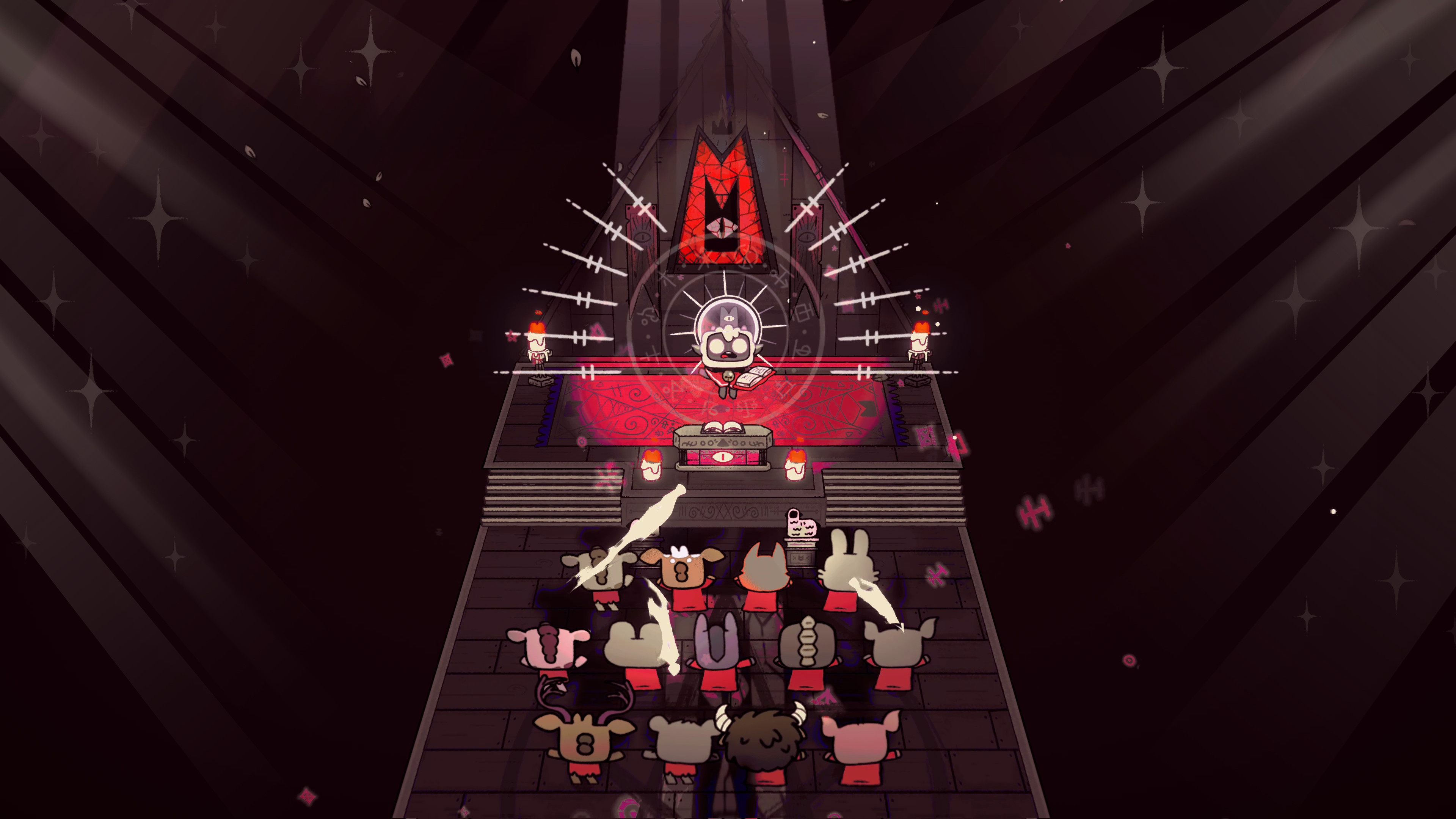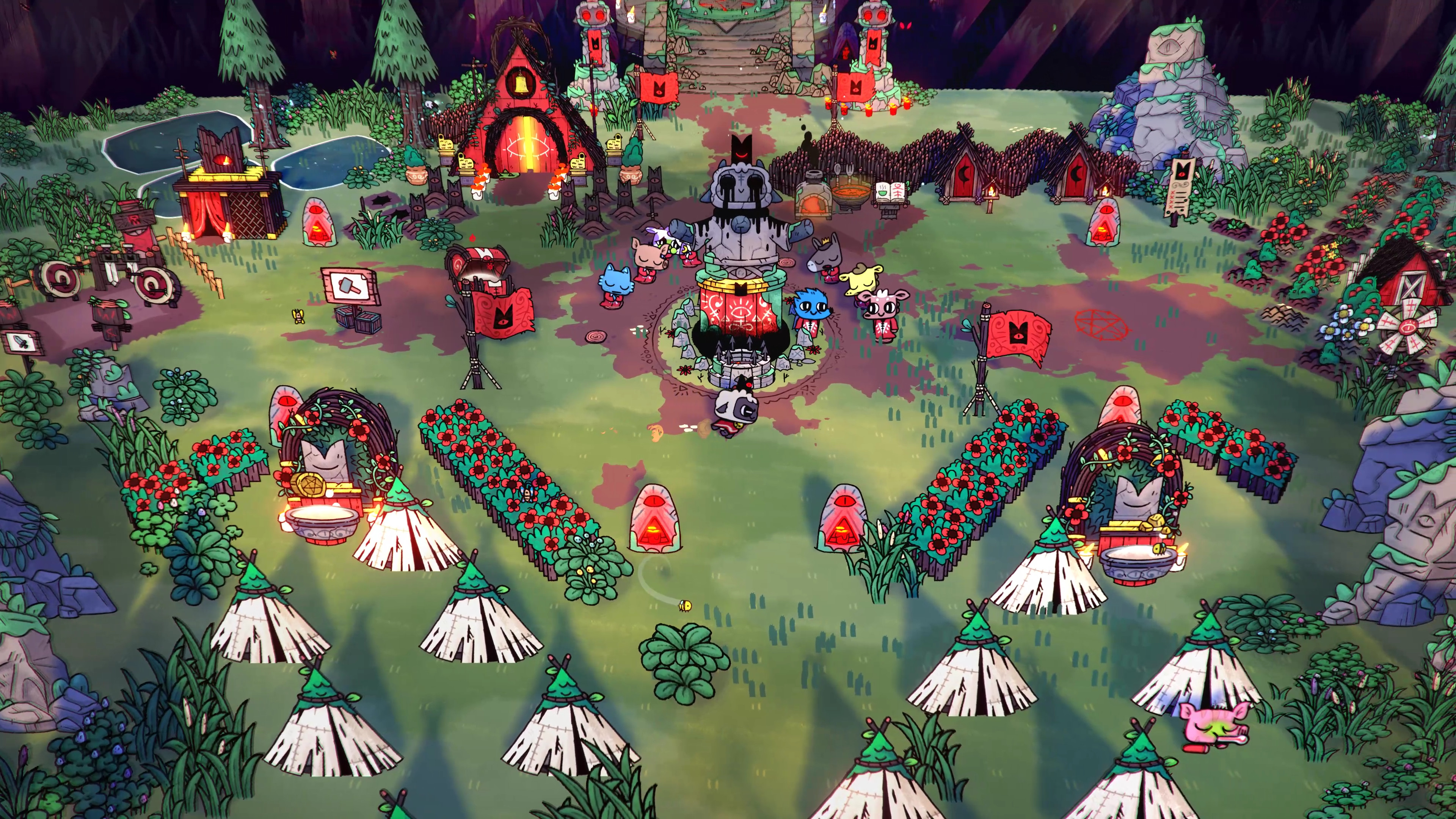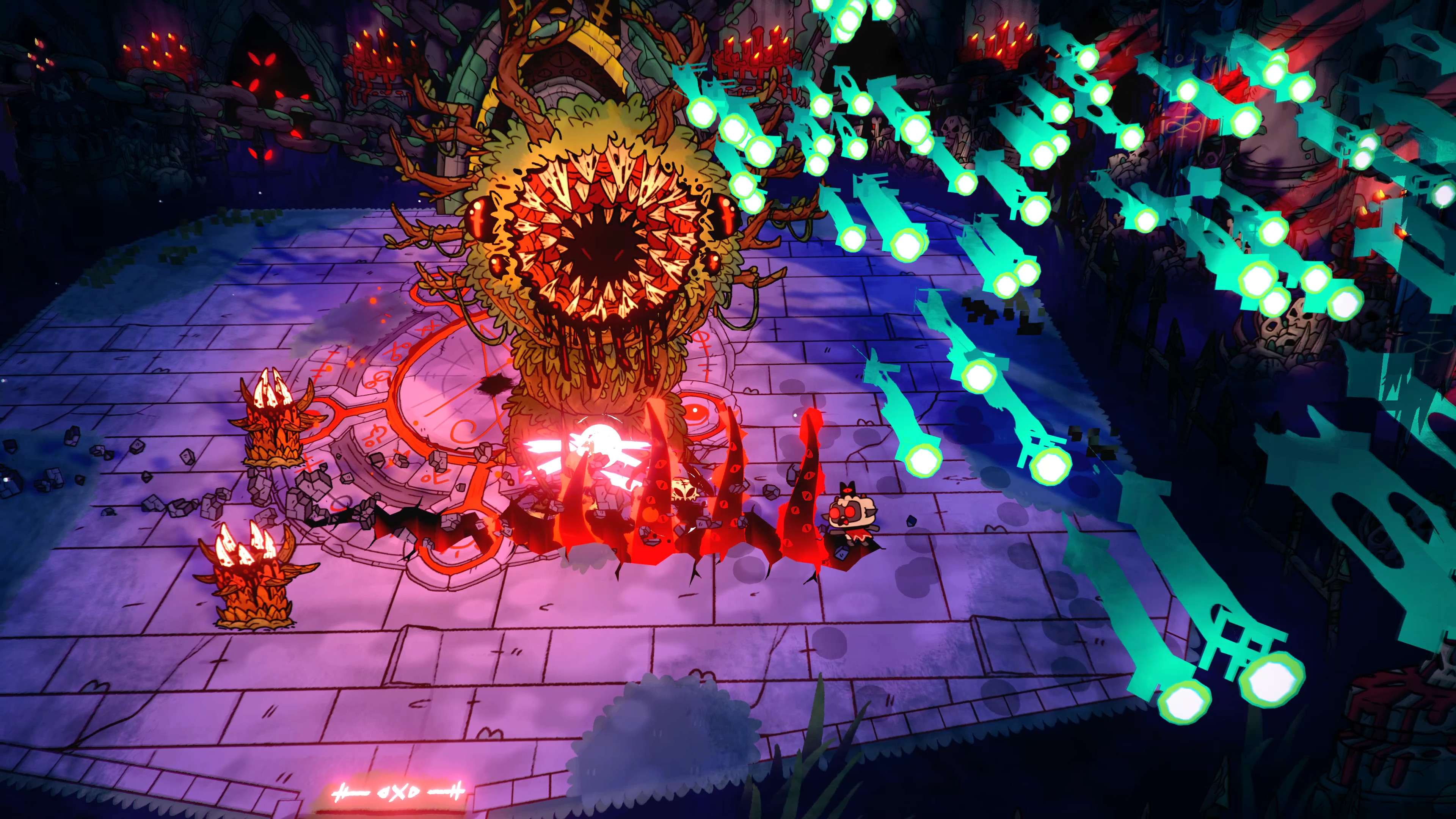Cult of the Lamb is like Stardew Valley but I married, ate, and resurrected my spouse
It's a baaa-d joke

Though you might expect Kool-Aid to be its drink of choice, Cult of the Lamb is built for watercooler moments. It gives you the tools and subsequent pushback to create an environment for stories of your own making. Even better, the latest from Massive Monster has this wonderfully twisted view that contextualizes your experience entirely through the form of dark humor.
Cult of the Lamb is an amalgam of two very different genres – lifestyle games like Animal Crossing: New Horizon or Stardew Valley, and the best roguelike games in the style of The Binding of Isaac and Hades. The central loop has you go out on crusades, navigating through hostile territory with enemies to fight, all while improving your loadout along the way. Then, once you’ve tasted success, you come back to base – where you use the resources you earned on your run to improve and maintain the lives of your cult followers. It’s a satisfying circle, and while not as deep an experience as the games it pulls from for inspiration, that’s forgivable – since Cult of the Lamb is mashing two game types together, and doing it well.
While that interplay between the two genres makes up the core experience, Cult of the Lamb really comes to life as a storytelling machine once you start to experiment with Rituals.
Rituals are actions you can perform that make up a lot of the more interesting interactions with your followers. They range from the mundane to the ridiculous and add some fun, personal context to your relationship with your cultists. A Ritual can be as small as throwing a feast, or as large as giving your follower a leg-up in ascending to a higher plane of existence – raising the morale of everyone around you.
A twisted relationsheep

After beating Cult of the Lamb, the stories I’ve walked away with are the ones in which Rituals combined, with entertaining and deeply unethical results. The most outlandish situation I got myself into was a story of magic mushrooms, sacrifice, cannibalism, and undeath. I found myself in an awkward spot – not having enough food for everyone, and especially needing some meat to finish a quest for a follower. Instead of going out into the world to forage for it, I instead hatched a dastardly plan, like the evil cult leader the game so clearly wants me to be.
In order to get the meat I needed, I looked inward. First up, I used a special Ritual to drug my followers with mushrooms – leaving them too dazed to lose faith in me for three days. This gave me carte-blanche to enact the dark deeds ahead. I decided to sacrifice a follower, but more than that, one of my the followers who I married in Cult of the Lamb – as those with higher levels and more devotion to you yield higher rewards.
That messy business done, I cooked two meals – one for the follower who wanted the meat, and another for me, to get an extra heart on my next crusade. We both chowed down to get our respective rewards.
Get daily insight, inspiration and deals in your inbox
Sign up for breaking news, reviews, opinion, top tech deals, and more.
However, life as a cult leader is a bit lonely without the ones you love. So I used a Ritual for Resurrection on my spouse to raise them from their grave before the mushroom effects wore off, restoring the original status quo. What happens on the Long Mushroom Weekend stays on the Long Mushroom Weekend.
The stories ewe'll tell

This all plays out against the backdrop of Cult of the Lamb’s sickly cute aesthetic. The friendly animals render these awful deeds far more fun and lighthearted than these descriptions may suggest. And that’s the source of Cult of the Lamb’s humor. Look at all these awful things you can do – but all within the safety of a children’s cartoon.
More substantially, there’s also underlying criticism of organized religion, especially sects formed around idols and other leaders. While it’s played as dark comedy, there’s a constant unease – a reminder of the real-world hurt and atrocities perpetrated by cults and the worst exploiters of established religions.
Comedy in games, especially dark comedy, is hard to write. For instance, while some love it, Borderlands’ brand of humor is nails-on-a-chalkboard for others due to the relentless meme-infused jokes. So often the best comedy in the medium is heavily user-influenced. I know for me, the funniest moments of my gaming life have come from weird happenstance, or my friends and I pushing a game to its limit.
GTA 5’s written satire is often the lowest-hanging fruit, but who hasn’t had a hilarious time going on a five-star rampage across Los Santos, laughing to the point of tears with a friend next to them? Or perhaps a moment in a match of Apex Legends, where the game’s breakneck pace and abilities mix to create a flash of pure chaos that ends in your death, but more importantly, a funny anecdote?
Games by their nature are inherently funny because people are. One of the few joys of social media is seeing so much that makes you laugh – most of which doesn’t come from trained professionals, but from unlikely places and people with interesting, everyday perspectives. Games provide a theater stage with a box of toys for players to construct their own stories.
Cult of the Lamb knows that. While it has its own 12-15 hour-ish story to play through, that isn’t the topic of conversation you’re going to bring up with friends after playing it. It’s instead going to be the ridiculous situations you can find yourself in – as you set up your own religion and perform dark rituals in order to feed your hungry cultists premium-grade spouse steaks.

Patrick Dane is TechRadar Gaming's Guides Editor. With nearly a decade in the games press, he's been a consistent voice in the industry. He's written for a plethora of major publications and travelled the world doing it. He also has a deep passion for games as a service and their potential to tell evolving stories. To wit, he has over 2000 hours in Destiny 2, over 1000 in Overwatch and is now deeply into Valorant.